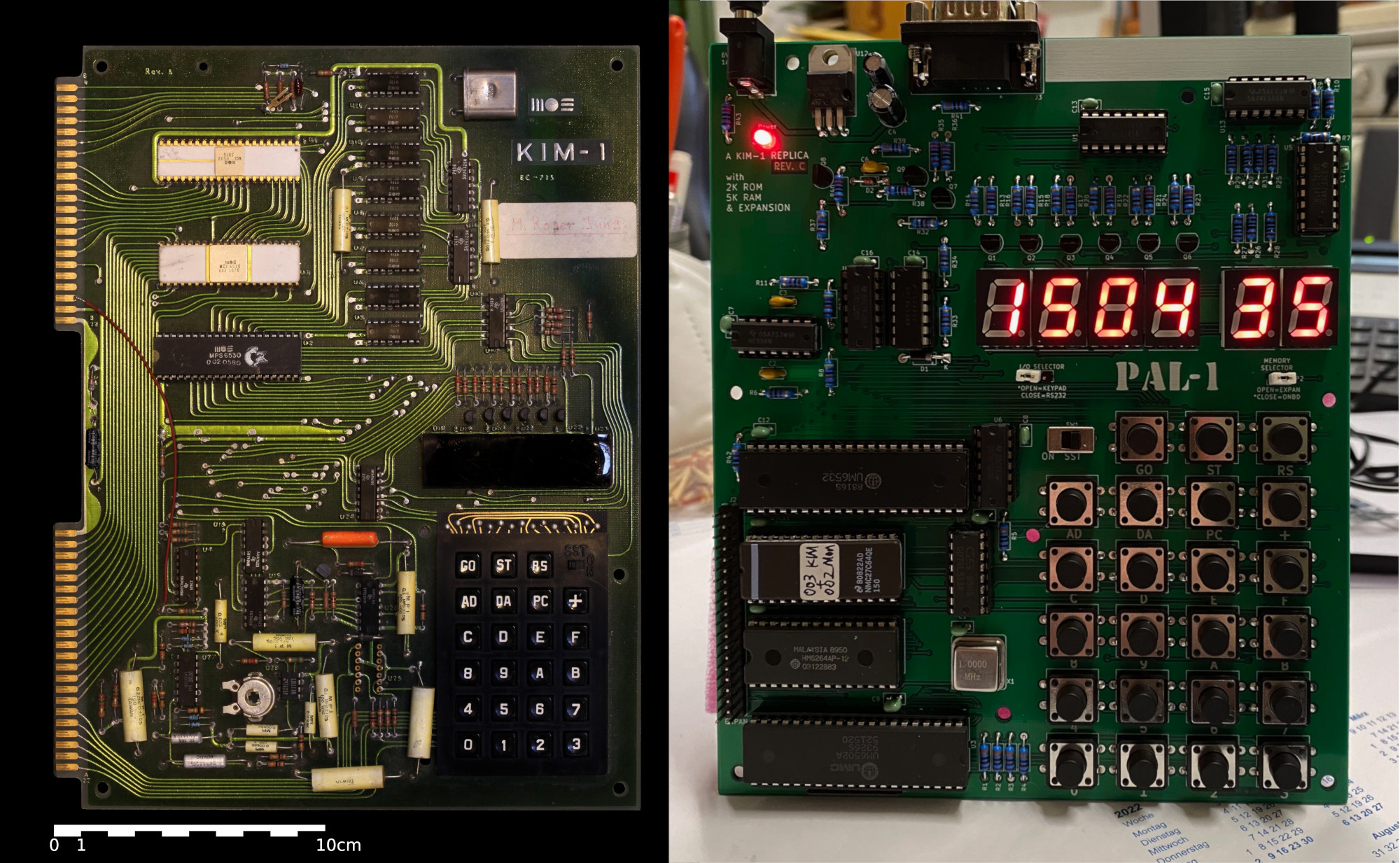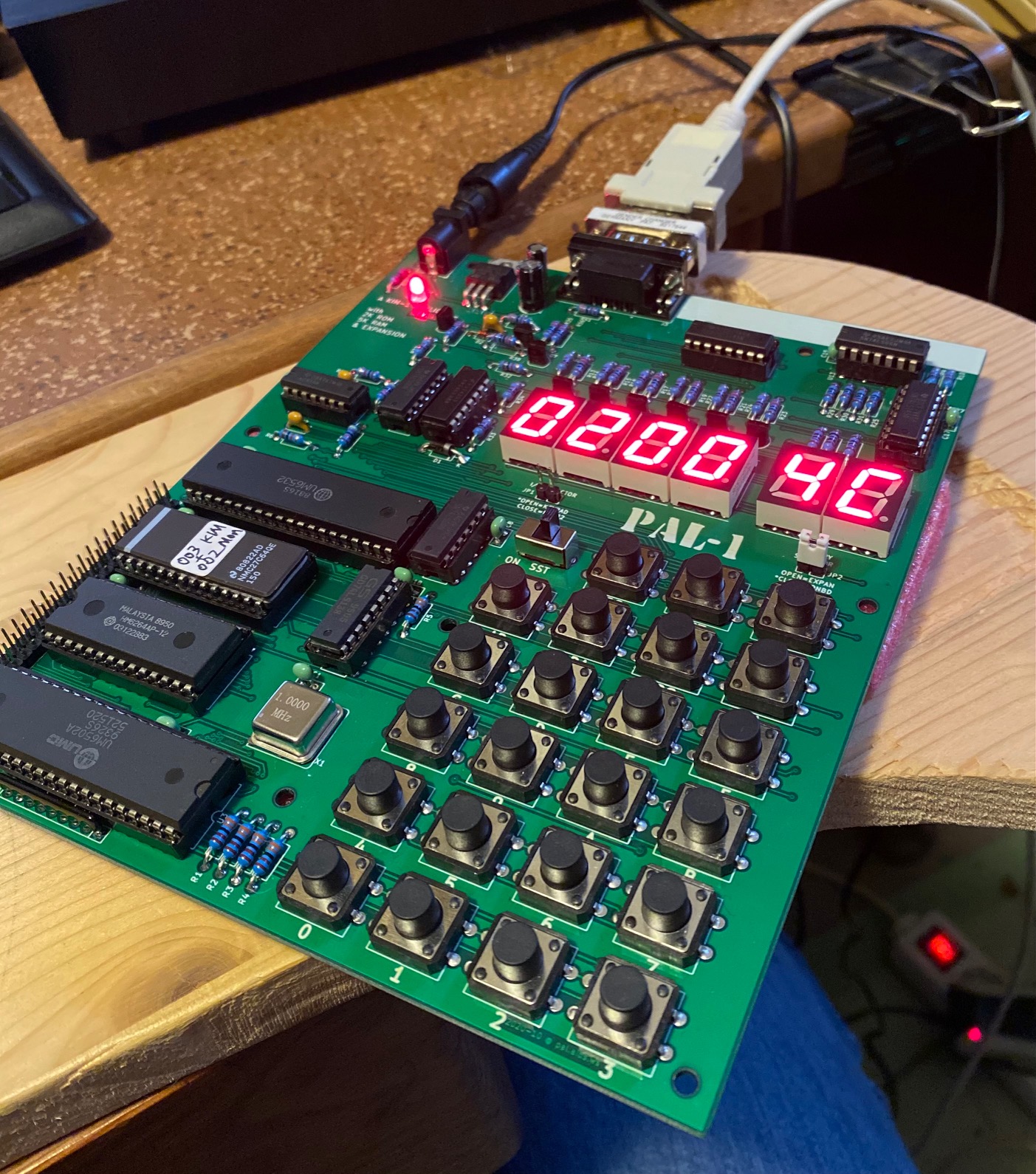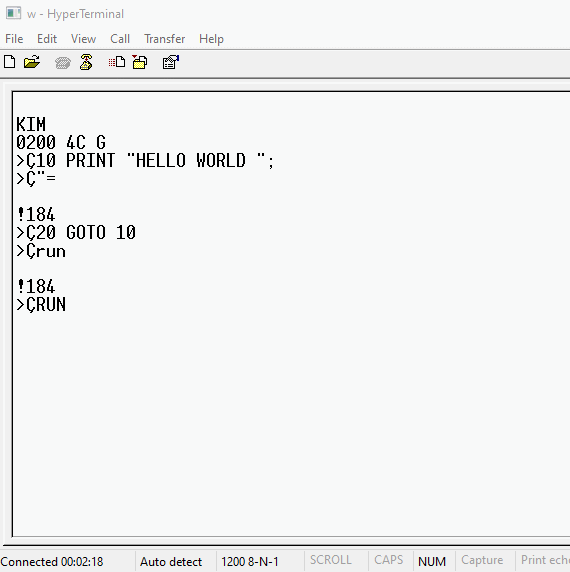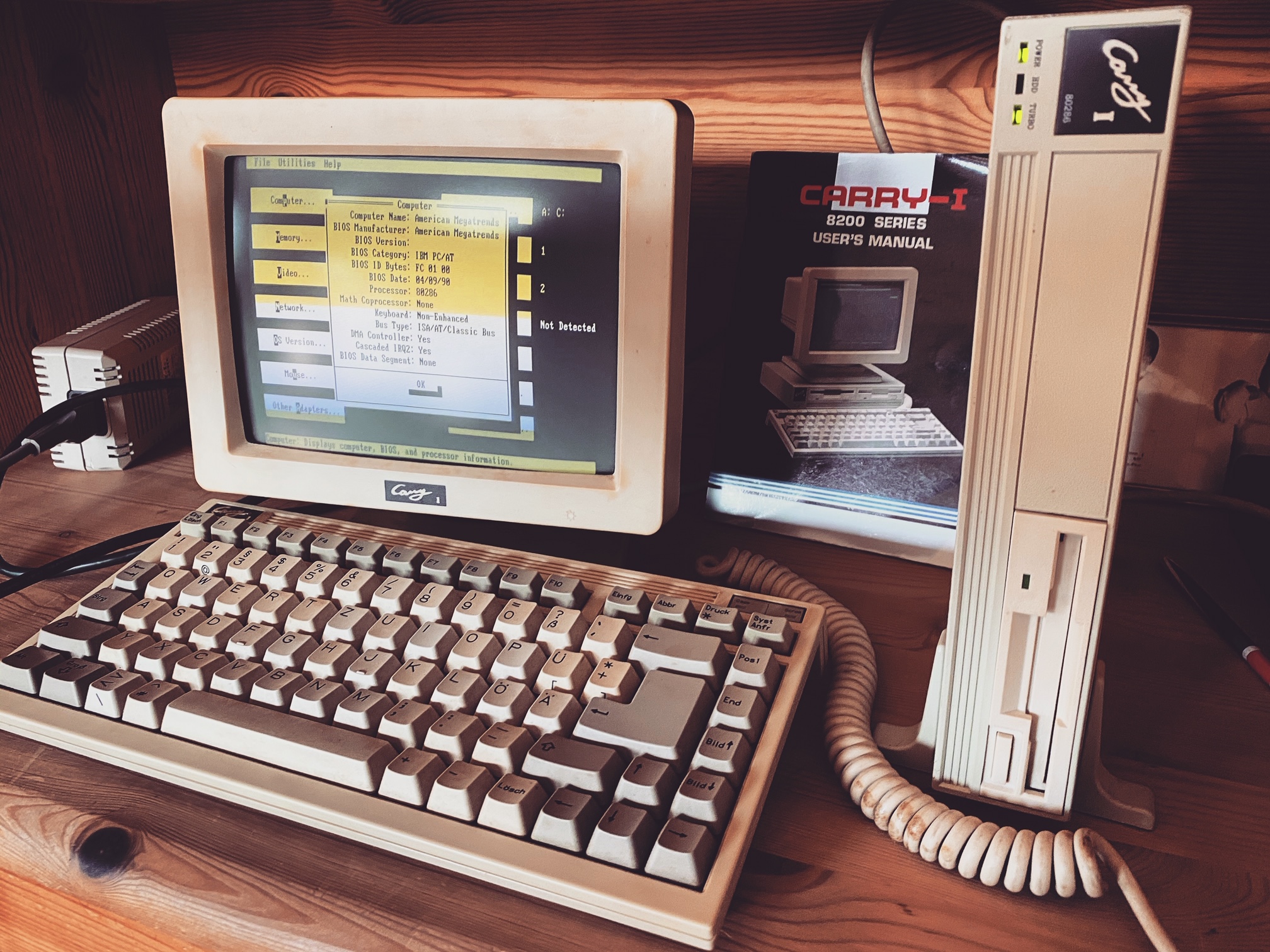Evolution in Homecomputing
16.1.21, 14:11 -
retro & C64gepostet von web doc
Just recently I biuld a KIM-1 Clone.
Kim-1? Yes, one of the (if not the) first affordable computers for home usage (aka homecomputer) from 1975.

on the left: the real thing, on the right a clone with original chips.
Its barely comparable to what computers nowadays look like:
A unshielded motherboard, 6 LED digits as output, 23 input buttons for programming the thing direct with
assembly language.
It was planned as a proof of concept for the
6502 processor by MOS technologies, running at the speed of 1 MHz with 2 KB ROM and 1 KB RAM, expandable up to 64 kb.
As storage you needed to wire a casette tape recorder.
Back than a revolution: a real computer for around 200 Dollar.
The KIM-1 was a full success. Even after MOS was bought up by Commodore, this Computer thing was produced until 1979. Several expansion kits were available, as well as the Microsoft basic interpreter and the next step Homecomputer, a PET 2001, based upon the KIM Design, was available in 1977.
The feeling to write your own program, on a computer you actually can afford must have been better than sex.
Please compare this setup to computing nowadays: A kid with an smartphone is only able to create some TIKTOK shit. Undereducated hillbillies rant on twitter and think they won an election, because everyone in their filterbubble did vote for trump. The underlying technologie is of no interest anymore.
An average smartphone is 30000 times faster and has
four million times the memory of the old KIM-1, and nobody knows how to actually use it.
When did things start to go wrong? Was it when normal people build their geocities sites? Even in the end 90s people were fascinated by this form of computing and communication. They still need to build the webpages using html.
You actually had to learn to participate.
Later, when 'web 3.0' buzzered in our ears, companies realized how to transfer this knowledge gap into money. facebook, twitter, google are so incredible overpowered because they are tending the sheep. Eat, shit, give wool. This is what 99% of the users are for.
More of my kim-1 l8r
webdoktor



